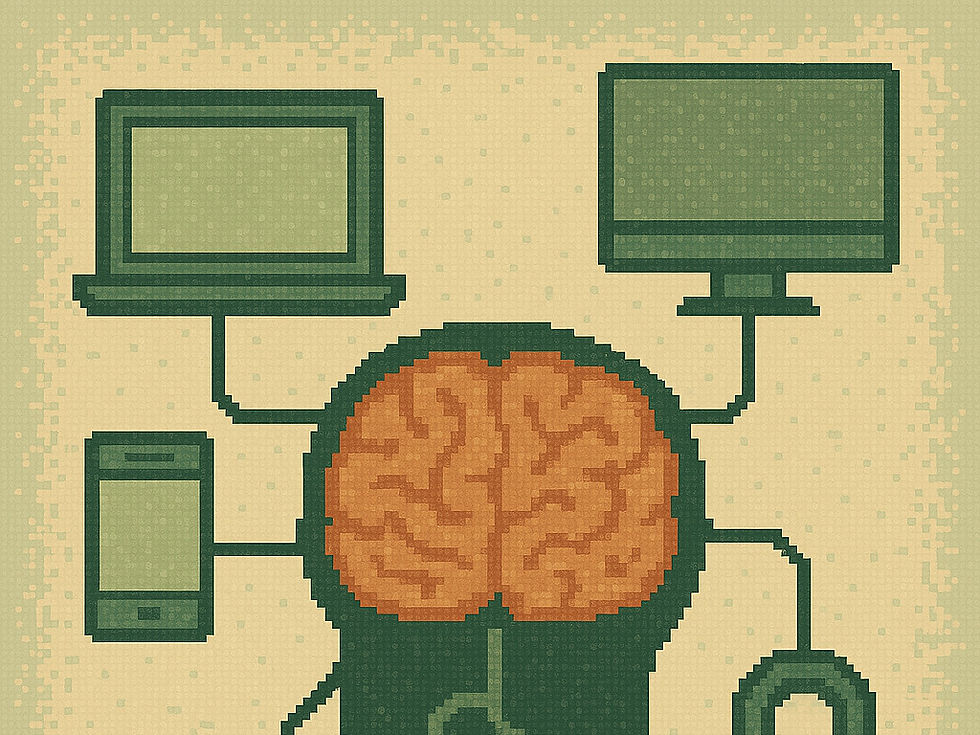What is Unsupervised Learning?
- learnwith ai
- Mar 25
- 3 min read
Updated: Apr 6

Machine learning is transforming how we interact with technology, enabling systems to learn from data and make informed decisions without explicit programming. Within this field, there are two primary approaches: supervised and unsupervised learning. While supervised learning relies on labeled data to predict outcomes, unsupervised learning takes a different path, diving into the unknown to uncover hidden treasures within unlabeled datasets. So, what exactly is unsupervised learning, and why does it matter? Let’s explore this fascinating concept.
Defining Unsupervised Learning
Unsupervised learning is a branch of machine learning where algorithms analyze data without predefined labels or explicit instructions. Unlike supervised learning, which uses input-output pairs to train models, unsupervised learning works with raw, unlabeled data. The mission? To discover patterns, structures, or relationships that lie beneath the surface. This approach mimics human curiosity, seeking meaning in the chaos of information without a guiding hand.
This method shines in scenarios where labeled data is scarce or impractical to gather. Imagine a vast ocean of data: unsupervised learning is the tool that helps us navigate it, revealing insights that might otherwise remain hidden.
Why Unsupervised Learning Matters
In today’s data-driven world, not all information comes neatly packaged with labels. Collecting and annotating data can be a costly, time-intensive process. Unsupervised learning steps in as a powerful ally, allowing us to extract value from unstructured datasets. It’s like an explorer charting uncharted territory, offering a way to understand complex systems and inform decision-making across industries.
Key Techniques in Unsupervised Learning
Unsupervised learning employs several techniques to make sense of data. Here are the core methods that define this approach:
Clustering: Grouping the Similar
Clustering is the art of organizing data points into meaningful groups based on their similarities. Picture a librarian sorting books into categories without knowing their titles. One popular technique, K-Means clustering, divides data into a set number of clusters by assigning each point to the group with the closest average value. This method is widely used to segment customers or organize documents.
Another approach, Hierarchical Clustering, creates a tree-like structure of nested clusters, revealing relationships at different levels of granularity. It’s perfect for understanding hierarchies, like family trees or taxonomic classifications.
Dimensionality Reduction: Simplifying Complexity
Data often comes with more features than we need, making it cumbersome to analyze. Dimensionality reduction tackles this by shrinking the number of variables while preserving the essence of the information. Principal Component Analysis (PCA) is a standout technique here, transforming data into a simpler form by focusing on the directions where it varies most. Think of it as distilling a complex recipe into its key ingredients.
Autoencoders, a type of neural network, also excel in this area, learning compact representations of data for tasks like image compression or noise reduction.
Anomaly Detection: Spotting the Unusual
Sometimes, the goal is to find what doesn’t fit. Anomaly detection identifies rare or unexpected data points, such as fraudulent transactions in banking or equipment failures in manufacturing. By modeling the norm, unsupervised learning flags deviations, acting as a vigilant sentinel in a sea of information.
Beyond the Basics
Advanced methods like Generative Adversarial Networks (GANs) push the boundaries further. These systems generate new data resembling the original, fueling creativity in areas like art generation or synthetic data creation for research.
Advantages of Unsupervised Learning
This approach offers distinct benefits:
No Labels Required: It thrives on unlabeled data, reducing the need for extensive preparation.
Pattern Discovery: It uncovers structures we might not even know to look for.
Versatility: It adapts to diverse datasets, from text to images to genetic sequences.
Challenges to Consider
However, unsupervised learning isn’t without hurdles:
Interpretation: Results can be open to subjective analysis, requiring expertise to decipher.
Evaluation: Without labels, measuring success is trickier than in supervised learning.
Computation: Some algorithms demand significant resources, especially with large datasets.
Real-World Applications
Unsupervised learning powers solutions across domains:
Customer Segmentation: Businesses cluster shoppers by behavior, tailoring marketing strategies with precision.
Image Compression: Techniques like PCA shrink file sizes while keeping visuals intact.
Genomics: Scientists uncover gene expression patterns, advancing medical research.
The Future of Unsupervised Learning
As data grows in scale and complexity, unsupervised learning’s role will only expand. Innovations in deep learning, such as GANs and self-supervised techniques, are redefining what’s possible, bridging the gap between human intuition and machine capability. This field promises to unlock new frontiers in artificial intelligence and data science.
Conclusion
Unsupervised learning is a cornerstone of modern machine learning, offering a window into the unseen. By harnessing clustering, dimensionality reduction, and anomaly detection, it reveals the stories hidden within data, no labels required. Whether simplifying complexity or spotlighting the unusual, this approach delivers insights that shape our understanding and drive progress across countless fields.
—The LearnWithAI.com Team
.png)


